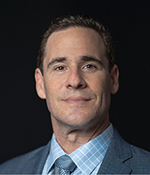Limb-lengthening surgery, or distraction osteogenesis, is a technique popularized by Gavriil Abramovich Ilizarov in the 1950s that involves a large circular external fixator. The Ilizarov technique was introduced in Europe and the United States in the 1980s and has been adopted by surgeons for the correction of limb-length discrepancy, angular deformity, and nonunion. Because of the necessary bulky external fixators and pins, the use of distraction osteogenesis for cosmetic limb lengthening has been limited. This all changed with the development of a magnetic lengthening rod that renders the procedure more acceptable for patients who are seeking limb lengthening for cosmetic purposes.
The topic of cosmetic limb-lengthening surgery has garnered public interest in recent years, with coverage in BuzzFeed News and GQ. The role of cosmetic surgery has traditionally been relegated to the plastic surgeon. However, this new technology brings about new issues to be considered for cosmetic limb lengthening and the role of orthopaedic surgeons in performing this procedure.
For AAOS Now, Selina Poon, MD, MPH, FAAOS, led a roundtable discussion with several experts in limb-lengthening surgery to gather their insights and discuss the pros and cons of performing this cosmetic procedure. The discussion features L. Reid Nichols, MD, FAAOS, FAOA, pediatric orthopaedic surgeon at Nemours Children’s Hospital in Wilmington, Delaware, and president of the Limb Lengthening and Reconstruction Society; Craig Robbins, MD, FAAOS, orthopaedic surgeon at Paley Orthopedic and Spine Institute in West Palm Beach, Florida; and David Frumberg, MD, FAAOS, assistant professor of orthopaedics and rehabilitation at Yale School of Medicine in New Haven, Connecticut.
Dr. Poon: As orthopaedic surgeons, do you think we should be offering cosmetic surgery for height?
Dr. Frumberg: As doctors, we took an oath to do no harm; historically, limb lengthening was synonymous with complications. However, literature supporting the psychosocial aspects of taller stature continues to expand, and our technology has improved drastically. We also have enough experience with improved techniques and surveillance for potential complications that the safety profile has changed. With truly informed consent, the procedures can be offered.
Dr. Nichols: Orthopaedic surgeons trained in limb lengthening should be able to offer cosmetic surgery for height. Limb-lengthening techniques have evolved, but the principles remain the same. Limb-lengthening surgery, even in the most experienced of hands, is a very complex procedure that has many potential complications. In addition, successful outcomes in limb lengthening require the patient have regular access to a large pool of additional resources, such as physical therapists, psychologists, and nurses specially trained in the field. Patients should make sure that their surgeon is not only fully proficient and knowledgeable about limb lengthening but also that there is a complete healthcare team available to assist the patient through the process. The adage of doing “the right surgery for the right patient at the right time” applies.
We know that short stature can negatively impact many aspects of a patient’s life, including job opportunities, significant-other selection, perceived attractiveness, and level of success. The stigma of height for males is greater than for females. The dilemma is, should we increase height in an otherwise healthy patient? Cosmetic stature lengthening has high postsurgical satisfaction, although patients should be aware of the duration of treatment and possible complications. It results in improved self-esteem, quality of life, and confidence in social settings. Most would recommend surgery to others.
Dr. Robbins: I think patients will desire this, and, as such, I think orthopaedic surgeons are the people who should be doing it. As someone who has treated hundreds of stature patients, I can say that the vast majority of patients who seek out this procedure are considerably affected by their height.
Do you believe there is or should be a height threshold for this procedure? Why?
Dr. Frumberg: Height is relative to all. Someone who is above-average height has a different threshold than someone who is less tall. Like all interventions, people have goals that may be different.
Dr. Nichols: It is not always what you “can” do, it is what you “ought” to do. I do not believe there is an absolute height or amount that we can lengthen, nor do I think surgeons can determine absolute height requirements or limits. There are many cultural determinants that can impact what is acceptable. Limb lengthening is a safe procedure. We have been performing limb lengthening for over a century. The procedure has become safer and more tolerable with internal lengthening devices. With any procedure, complications can and will happen. Therefore, it is important to try to prevent unnecessary complications and balance the risks with the benefits of surgery.
Dr. Robbins: Average heights across the world and peer groups are different. The perception of being short and the persistent (negative) thoughts and emotions associated with feeling short are pervasive to these patients.
If a patient comes in wanting lengthening to improve his/her athletic performance, how would you counsel him or her? What if the patient is a minor?
Dr. Frumberg: Improved athletic performance is not an indication of mine. I don’t believe we’ve shown that the distracted muscle-tendon unit can reach superior athletic performance following lengthening, and I would imagine it would take years to recover the plyometric strength anyway.
Dr. Nichols: I would not recommend limb-lengthening surgery solely for improving athletic performance. The expectations of cosmetic surgery should be realistic and attainable. The recovery from limb-lengthening surgery takes months to reestablish normal gait parameters.
Dr. Robbins: Stature lengthening will not make you a better athlete. You have to be skeletally mature to be a candidate. Very few of our patients are under the age of consent.
What are your indications for this procedure?
Dr. Frumberg: The indication is a desire for taller stature that is physically attainable. Most importantly, the patient has to have the psychological grit and support system to be able to undergo the treatment.
Dr. Nichols: Although I do not have an absolute number, I would prefer to lengthen females under 5″ and males under 5′3″. Psychologic testing should demonstrate no evidence of severe dysmorphia or a body dysmorphic disorder.
[It is also important to] understand the reasons why a patient would like to have limb lengthening. What do they perceive to be the potential impact of increasing height on their future? Do they understand the time to recovery, the postoperative precautions, financial requirements, insurance restrictions? Do they have the support network at home for the period of no weight bearing? Are they able to modify their work schedule during recovery? Do they understand the need for a second surgery?
Dr. Robbins: From a medical point of view, does the patient truly understand the potential risks and complications; the logistics of the process; the prolonged recovery back to preexisting activity level; the amount of therapy and work required to have a successful outcome; the emotional, psychological, and financial implications (being out of work/school); how it affects family/friends/support groups? From a psychological point of view, does the patient have adequate coping skills and emotional intelligence and a support group to help them through this? As opposed to the unfortunate victim of a horrible traffic accident with a prolonged recovery, this is a planned and elective procedure. Both patients will suffer from loss of independence, recovery from major surgery, reliance on others, etc.
Because this is a cosmetic procedure, the cost of care is not covered by insurance. With the average cost of lengthening to be estimated $70,000 to $150,000 in the United States, this procedure will be limited by the patient’s ability to pay. Will this create additional disparities that were not present before?
Dr. Frumberg: Yes, absolutely. All surgery for appearance creates financial disparities.
Dr. Nichols: Data show that height can influence career opportunities. Therefore, cosmetic lengthening has the potential to create additional disparities if financing is not available to some. The question is whether the ability to safely improve height helps more or the inability to afford the procedure limits more patients.
If there is a complication secondary to the procedure, do insurance companies cover the subsequent procedures? Should they?
Dr. Frumberg: We have treated many complications here from lengthenings performed abroad: infections, nonunions, hardware complications, contractures, and failures of regenerate formation. Ethically, it is hard to recommend coverage by insurance for complications.
Dr. Nichols: In the case of breast augmentation, insurance does not pay for complications of cosmetic surgery. I do not think that cosmetic lengthening would be considered any differently. Currently, there is not a clear definition of limb lengthening as a “treatment” or “enhancement” (i.e., When is short stature a mild form of skeletal dysplasia, and when can it be considered “cosmetic”?).
Dr. Robbins: The short answer is usually no, insurance does not pay for problems arising from these procedures. We recommend that patients have about 10 percent of the surgical cost available in rare event of a problem/complication. Fortunately, we have a lot of experience at our practice. Experience helps you consider and predict what complications or problems may arise. We spend more time preventing them than treating them.
Unfortunately, at our practice we treat a lot of people from outside facilities who have developed complications. Safety is always the primary concern for us. We do not sacrifice function for length. If you know what to look for, you can be attentive and prevent [complications]. In other words, if a problem is developing, you can immediately adjust the treatment regimen to address the problem.
What happens if the patient cannot afford the additional cost of revision if a complication arises?
Dr. Frumberg: Fortunately, I have not had this problem, but we discuss it up front.
Dr. Nichols: The patient and the surgeon providing the service should have a plan to cover the cost if a complication arises.
Dr. Robbins: We have very few complications that result in additional costs. As stated above, we recommend a cash reserve in the rare instance there is a problem.
What are your thoughts about providing financing for this type of surgery?
Dr. Frumberg: No comment. (I don’t offer that, but I think the hospital probably does.)
Dr. Nichols: Financing this cosmetic procedure could mirror other cosmetic surgery. The results of statutory lengthening have been very positive and safe, both mentally and physically.
Dr. Robbins: I concentrate on the surgery, and the patients and the finance department concentrate on the finances.
Who should perform this surgery? Should there be additional training/certification?
Dr. Frumberg: All lengthenings are still lengthenings. Although we publish and write about prediction and mitigation of risks, they definitely occur, and their management is not straightforward. I recommend surgeons not dabble.
Dr. Nichols: I believe that orthopaedic surgeons trained in limb lengthening should perform cosmetic lengthening. This is not simply inserting a trauma nail.
The lengthening protocol, physical therapy regimen, and healthcare team are all paramount to the success of the procedure and avoidance of potentially catastrophic complications. Joint subluxation or dislocation, soft-tissue contractures, and delayed healing can happen even in experienced hands. Knowing how to treat and educate therapists is necessary to keep the procedure safe and effective.
Dr. Robbins: Limb lengthening is not a technically challenging surgery; any orthopaedic surgeon is capable of performing this surgery. However, performing it well requires skills and understanding of limb lengthening that are acquired through practice and volume. This is not really taught during training.
Although understanding how the limb can and will change during lengthening is critical, understanding the potential problems/complications is imperative. This should be done by a surgeon with experience in limb-deformity correction. This procedure should not be done casually and should be done by a surgeon with a dedicated team and institutional support for limb lengthening.
Should more surgeons offer this surgery so that patients will not have to travel long distances to obtain this surgical procedure?
Dr. Frumberg: In the era of telemedicine, it has become increasingly easier to get rehabilitation, radiographs, and check-ins closer to home following surgery. That said, people are willing to travel overseas to have these procedures, especially when cheaper.
Dr. Nichols: The convenience of having a surgeon nearby does not justify having more surgeons perform the surgery. The surgery is not the most important issue in limb lengthening. Having a team prepared to assist with preoperative and postoperative care is.
Dr. Robbins: Patients should go to the place they feel safest and have the most confidence in the team and surgeons.
How important is psychological counseling/testing for this procedure?
Dr. Frumberg: The input of mental health professionals is important for all lengthenings, not just height surgery. However, when someone is going to undergo a procedure with significant risk, it is helpful to know that they understand the risks involved. It is also helpful as a screen to ensure they have the tenacity to handle the long duration of the treatment, including rehabilitation. Regular involvement of a psychologist or social worker helps reduce postoperative stress and fosters compliance at all ages.
Dr. Nichols: Psychologic counseling/testing is very important for this procedure. Limb lengthening is major surgery. It is safe and effective. Multiple studies have demonstrated high patient satisfaction and increases in self-esteem and self-confidence. Patients need to be vetted to determine whether they understand the intensity of the postoperative protocols, do not have unrealistic expectations, or show features of dysmorphophobia. They need to have the means to come for frequent office visits, radiographs, and physical therapy.
Dr. Robbins: There seems to be a double standard with stature surgery and other cosmetic procedures. How much counseling is done for a man to have abdominal sculpting or a woman to have breast augmentation or a young woman to have rhinoplasty? We evaluate our patients individually and assess all aspects: psychological health, understanding, ability to comply, support, etc.
What support systems are necessary to minimize complications and ensure good outcomes?
Dr. Frumberg: Like all surgeries, patients need someone to help with their activities of daily living and transportation. This is important throughout all phases of treatment, not just the immediate postoperative phase. When setbacks occur, psychosocial supports are crucial to ensure the patient can get through them.
Dr. Nichols: Patients need to have a support team to facilitate postoperative follow-ups and physical therapy appointments. Can the patient take time from work? From the physician perspective, a team to monitor progress with lengthening, soft-tissue management, and the psychologic impact of the procedure is necessary.
Dr. Robbins: For the patient to truly understand the process and what it requires, family/friends/hired assistance are needed at least for the first few weeks to recover from the surgery. For the surgeon, [what is needed is] excellent physical therapy and institutional understanding of the process of cosmetic/elective stature lengthening, with frequent, in-person follow-up and radiography.
Should bilateral lengthenings be done simultaneously?
Dr. Frumberg: They can be done simultaneously if the patient has appropriate prehabilitation and learns to restrict weight bearing appropriately. A strong support system is important because the recovery is hard until pain gets under control.
Dr. Nichols: Bilateral limb lengthening can be done simultaneously. I would not recommend four segments simultaneously. This should be a discussion with the physician and the patient. It must take into account the support system and patient’s ability to remain non–weight-bearing.
Dr. Robbins: That’s how we always do it. Only the same limb segment at one time: femurs or tibias/fibulas. We separate limb segments by at least 3 weeks if the patient desires lengthening above and below the knee during the same time frame.
Selina Poon, MD, MPH, FAAOS, is a pediatric orthopaedic surgeon and director of research at Shriners Children’s Southern California in Pasadena, California. She is also a member of the AAOS Now Editorial Board.


